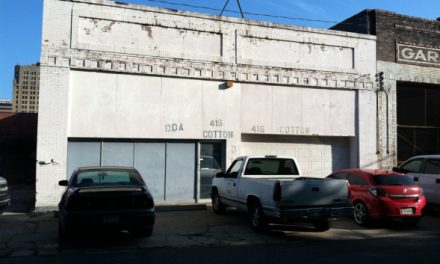By Dave Bland, Editor, Red River Valley Railroad Historical Society Newsletter & Board Member, Shreveport Railroad Museum
When thinking about the earliest railroads in our area we usually think about the Texas Western / Southern Pacific Railroad from Swanson’s Landing on Caddo Lake to Marshall, TX in 1857 or the Vicksburg, Shreveport & Texas Railroad in Shreveport in 1860 trying to get a line to Texas. These railroads were designed to use steam locomotives to pull their loads. However, the root definition of a “railroad” is “a permanent road laid with rails, commonly in one or more pairs of continuous lines forming a track or tracks…”
The name of the Texas Western Railroad was changed to Southern Pacific in 1856. The new company was required to complete 20 miles of track and service was to begin by February 1, 1858. During the latter part of 1857, the track-laying had been completed but the river boat containing the steam locomotive had not arrived at Swanson’s Landing. However, one of the railroad officials discovered that the charter did not stipulate what type of motive power had to be used. Therefore, amid shouts of encouragement and good-natured joking, the “engineer” of the first train hitched three yoke of oxen to the two box cars and one flat car standing on the track. He cracked his great bull whip and the historic journey was underway! On level ground and up the grades the oxen pulled the three cars. When the top of the grade was reached the oxen were unhitched, loaded on the flat car and they all sped down the incline with only gravity and simple hand brakes to control the speeding “train.” At least, this is the story reported in the Texas and Pacific Railway publication From Ox Teams to Eagles published in 1945.

Well before the activity described above, construction of the Baltimore & Ohio Railroad began on July 4, 1828. The initial tracks were built with granite stringers topped by strap iron rails. The first section, from Baltimore west to Ellicott’s Mills (now known as Ellicott City) opened on May 24, 1830. A horse pulled the first cars 13 miles and back, since the B&O did not decide to use steam power for several years. Later, the B&O’s first locomotive, the “Tom Thumb,” was made in America and pulled passenger and freight cars at 18 miles per hour.
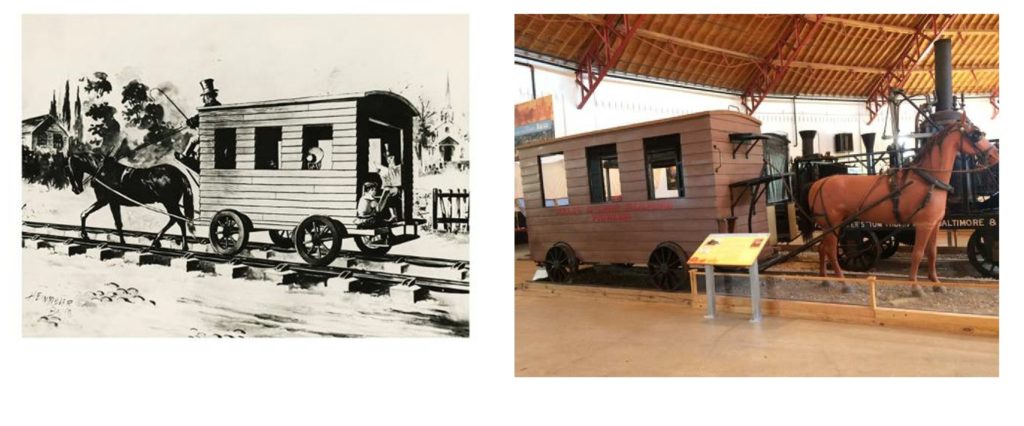
The Mule- Drawn Street Railway in Shreveport

The street railway was the first successful form of urban public transportation. The first horse-drawn streetcar line in the world began operation in New York City in 1832. The first cars were similar to stagecoaches, and mules, usually past retirement age, provided the power. Before 1860, thirty new lines were opened in cities across the country, in “practically every city of any importance.” Shreveport could not be considered an important American city, but they did not want to be left out. So between 1870 and 1872 three companies were formed to build street railway lines through the downtown district and to outlying areas. Two were successful in building and operating their lines but only one proved to be profitable, the Shreveport City Railroad Company (1870-1902). The line began at the intersection of Spring and Texas Streets, followed Texas Street to Texas Avenue, then ended at the city limits at Jordan Street. Their three cars were light enough for one mule to pull 20 passengers. Tracks and crossties were laid down the center of each street and work was completed in November, 1870. The first car was put on the track about 8:00 p.m. on December 31 and was greeted by cheering crowds and a band playing Dixie. Another car was added and each made three circuits with full loads of selected prominent citizens. On January 1 all three cars were in operation. The tracks were 4 ft. 4 inches apart and the cars changed direction at each terminus on a turntable. Cars could pass each other on a switching track half way along the route. Bells were attached to the mules to alert people of their approach. In the fall of 1871, another group organized the Fairfield Streetcar Company to service that growing area of the city. It began operation in 1872.
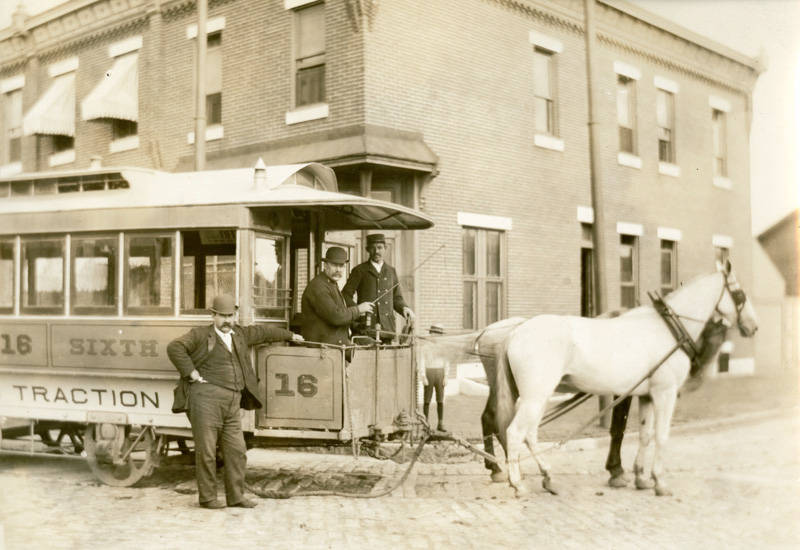
In 1872 an epidemic of “epizooty” infected the horse and mule population of Shreveport. Epizoon was a contagious respiratory infection often referred to as a cold or influenza in equine animals. The disease lasted from 1 to 4 weeks and seven of the eight City Railroad mules contracted the disease. They all survived and service resumed in late December.

Paving Texas Street in 1898.
Poor road conditions hurt the street railway companies. No streets were paved and frequent rains kept them muddy. It was hard to keep the tracks from sinking out of sight. The city paved the streets with wooden planks but this was not satisfactory because the planks were uneven and easily broken. Finally, Texas Street was paved with rocks in 1877. Fairfield Avenue was much worse and cars frequently ran off track. Road conditions, the yellow fever epidemic of 1873 and poor management caused the Fairfield Railroad Company to declare bankruptcy on December 28, 1876. Captain Peter Youree purchased the line at auction for $500 but made no attempt to restore it. The Shreveport City Railroad Company was the only surviving mule-car line in Shreveport. 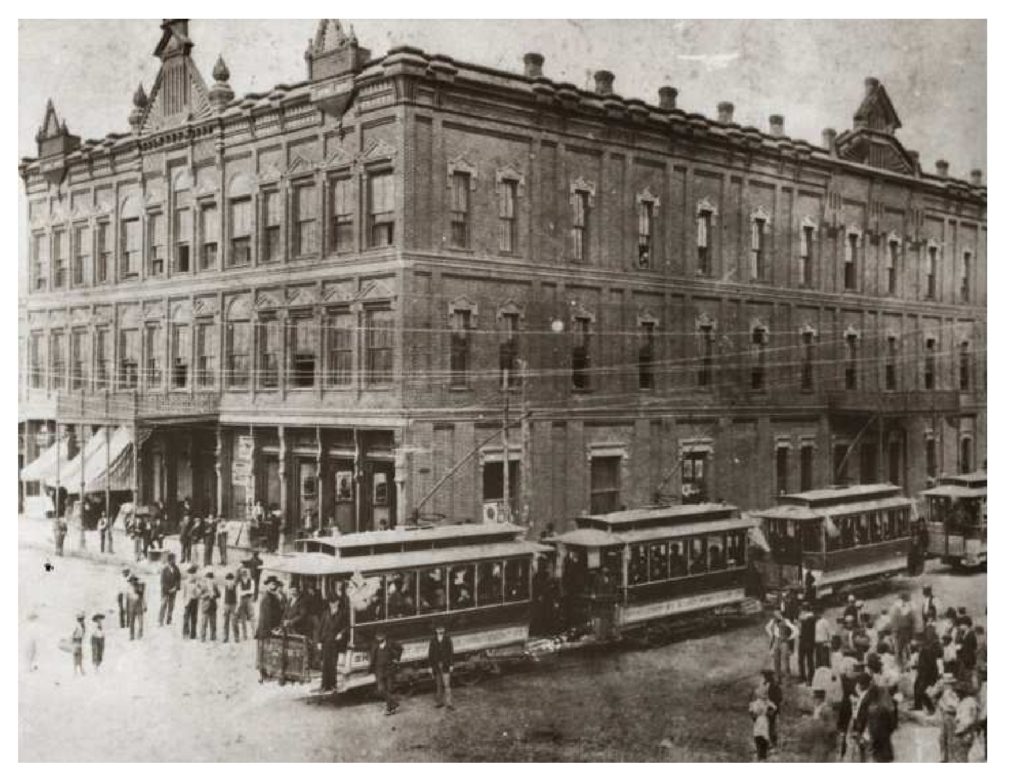
The first electric streetcars in Shreveport at Texas and Market Streets, October 4, 1890. Shreveport Railway and Land Improvement Company. Louisiana State Library photo
In 1890 the electric cars of the Shreveport Railway and Land Improvement Company began operation. Not to be outdone by their new rival, in 1892 the Shreveport City Railroad Company put their mules out to pasture and also installed electric cars. The Shreveport Belt Railway Co. took over the operation of the Shreveport Railway and Land Improvement Co. in 1893. In 1902 the two companies merged to become the Shreveport Traction Company (1902-1914). In 1914 the Shreveport Railways Company was chartered and took over their operations. They were the most successful company and had over 35 miles of track. The Cedar Grove line, which ran from Jordan Street along Southern Ave. to 74th Street, was the last streetcar line and was replaced by trackless trolleys in 1939.
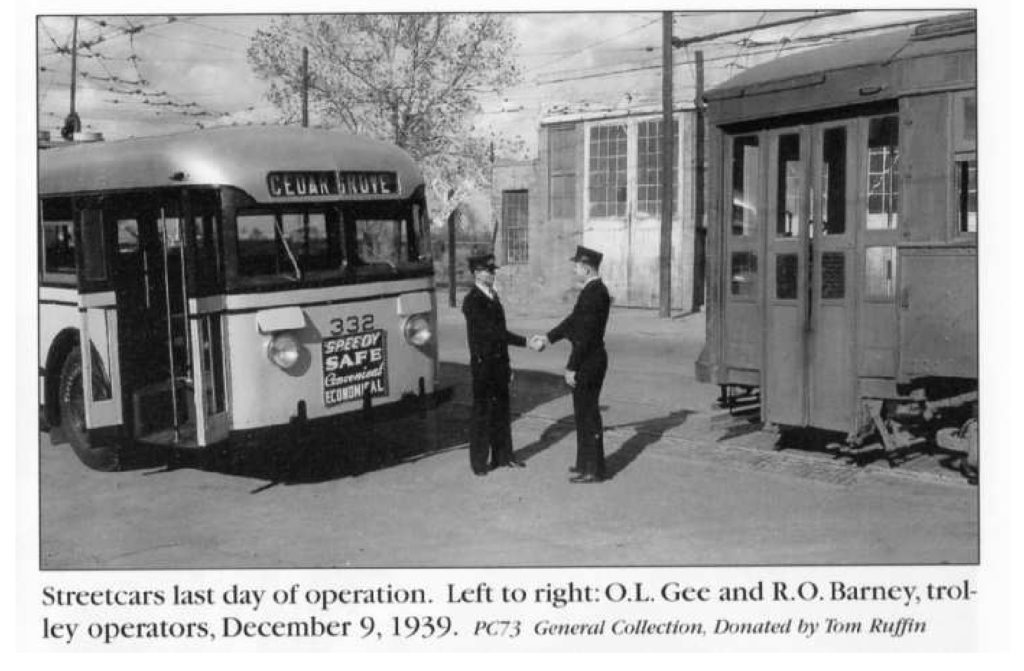

The above information is a general overview of streetcar operation in Shreveport. For more details see the books Lost Shreveport by Gary D. Joiner and Ernie Roberson and Street Railways of Louisiana by Louis C. Hennick and E. Harper Charlton. Leonard Gresens also provided important information for this article.


